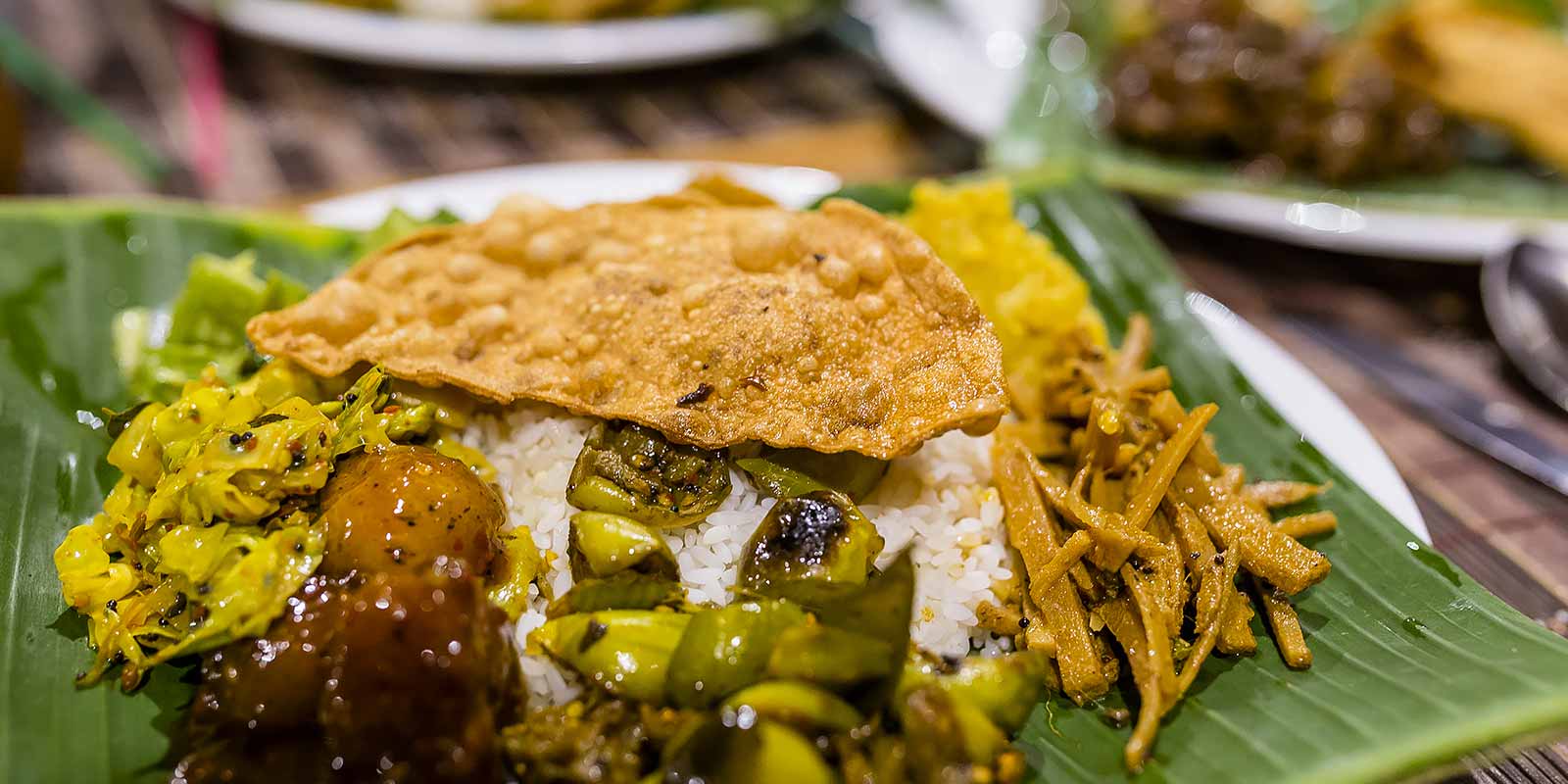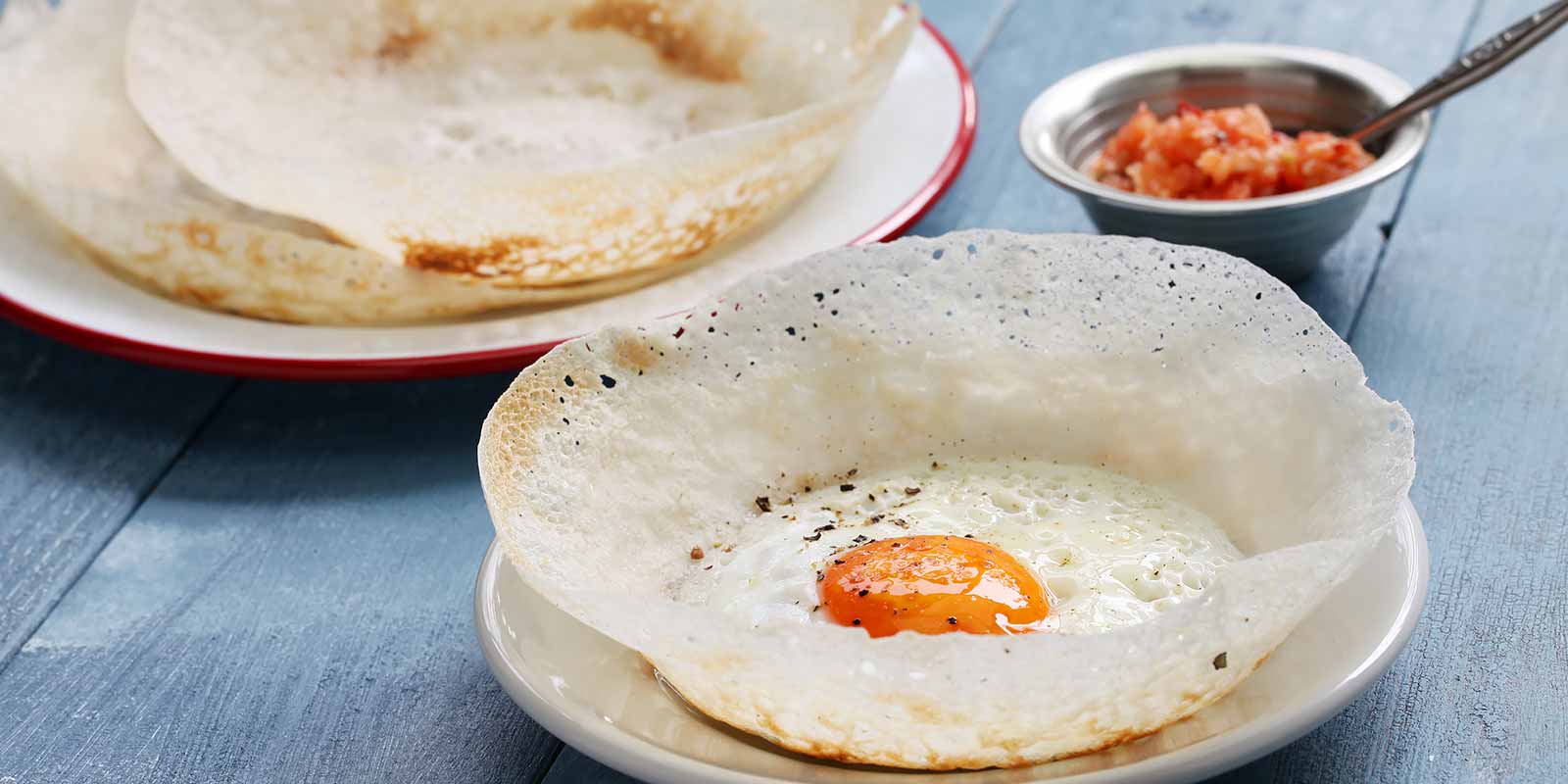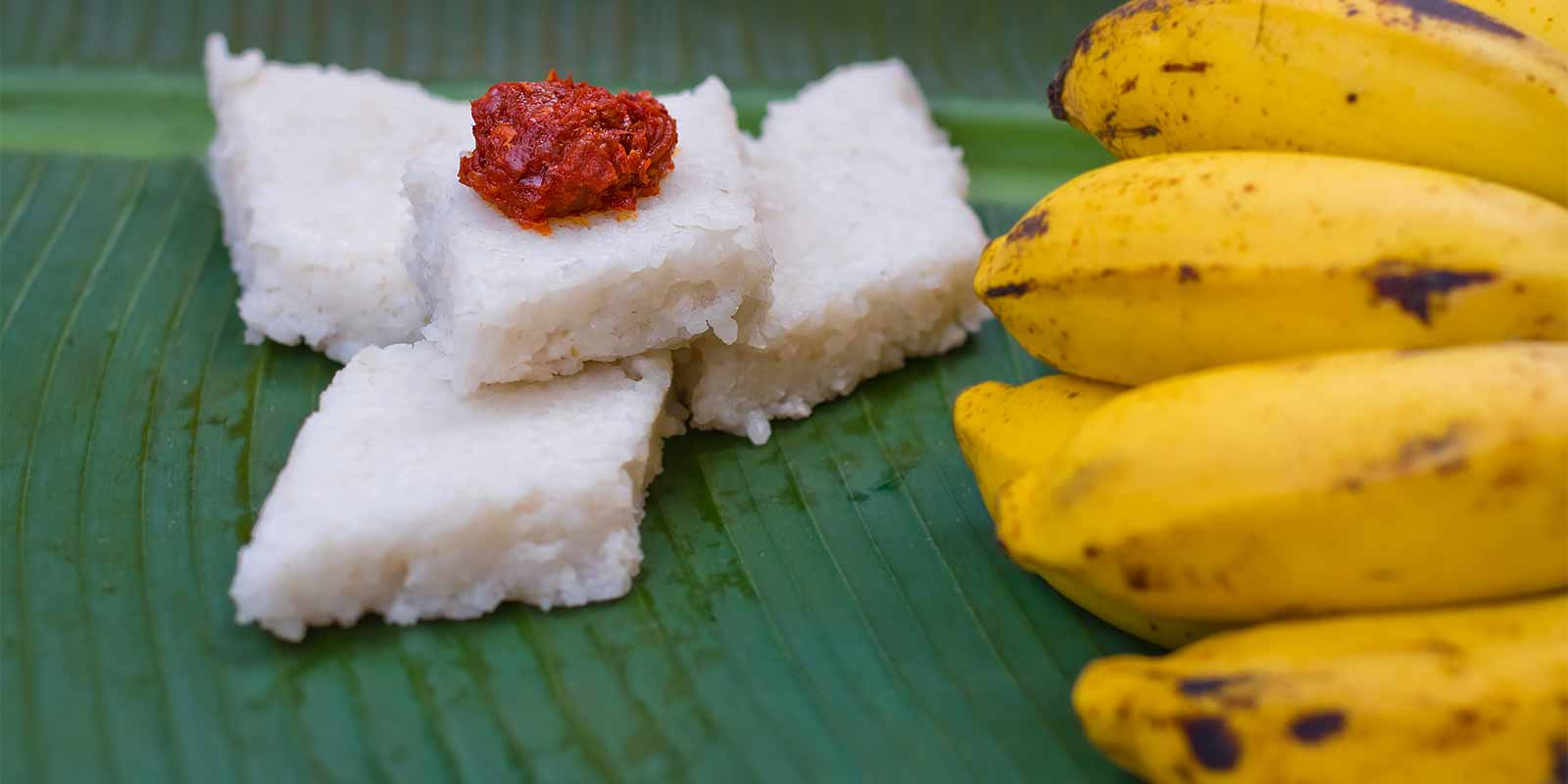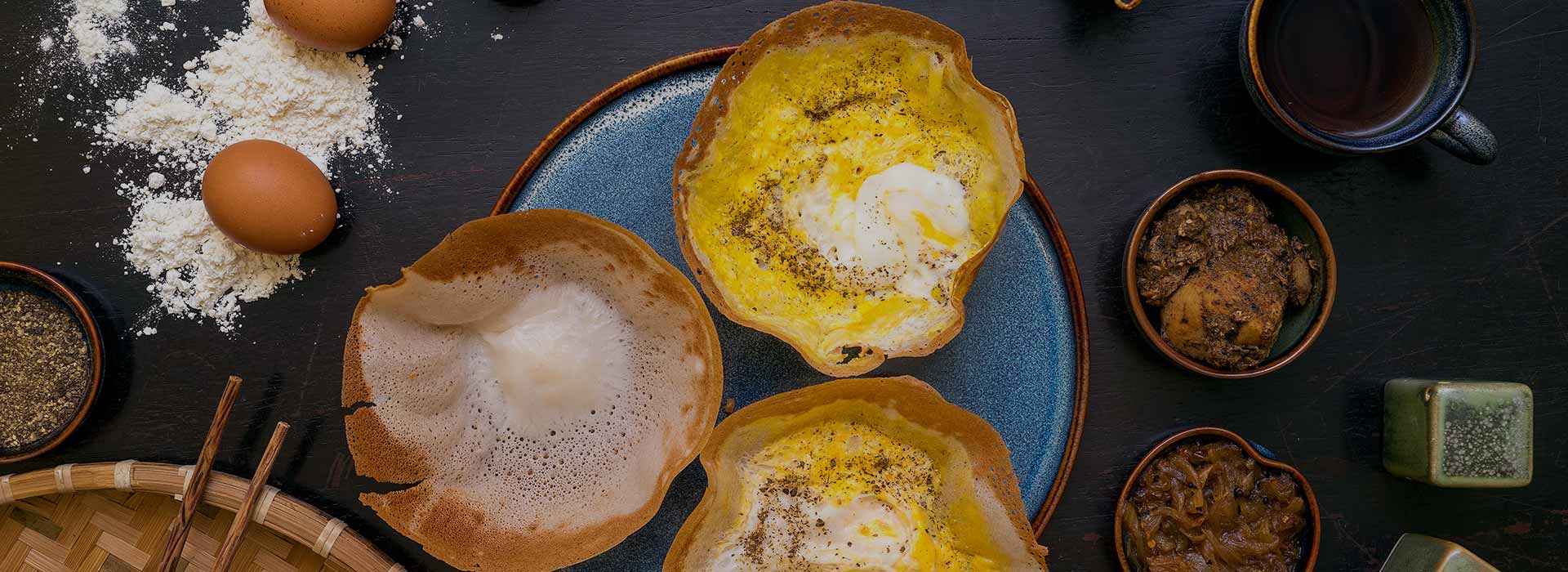The Taste of Sri Lanka: Explore a Melting Pot of Cultures & Flavours
Sri Lankan cuisine is more than just delicious food; it’s a window into the island’s rich history and vibrant spirit. With the influence of various ethnicities, Sri Lanka offers a smorgasbord of food that is a delight to the senses.
The Spices that Flavour the Island

Sri Lanka, aptly nicknamed the “Spice Island,” is where aromatic spices weave intricate flavours into every dish. Let’s explore the diverse roles of spices in the island’s vibrant cuisine.
Ceylon cinnamon is world-renowned for its delicate sweetness and floral notes. It is used in the preparation of many curries, rice dishes, desserts, and even tea, adding a unique flavour and fragrance. Next, we have black pepper, a fiery spice that adds depth and warmth. It is used to balance the sweet and savoury flavours in curries. Sri Lankan black pepper is known for its intense aroma and complex flavour profile, making it a staple in almost every dish. Green and black cardamom each offer distinct personalities to dishes. Green cardamom has a minty coolness to enhance savoury dishes, while black cardamom gives a smoky and earthy depth to curries and rice dishes.
Turmeric is a yellow spice that is not just used as a colouring agent; medicinally, it boasts powerful anti-inflammatory properties, and as a flavour, it adds a subtle warmth and earthy sweetness to curries and vegetable dishes. Cumin adds a warm, earthy aroma, while coriander seeds offer a citrus like taste. Together, they create a harmonious base for countless dishes.
Chillies are the main hero of Sri Lankan cooking. From the fiery green chillies to the milder red varieties, they are used whole, chopped, ground, or even pickled, contributing to the island’s love affair with spice. Other spices used include fenugreek, cloves, nutmeg, mace, ginger, and garlic.
Cooking the Traditional Way
A typical Sri Lankan dish will usually start out with a mix of base ingredients. These ingredients include spices and condiments, fresh onions, garlic and ginger, curry leaves and fresh chillies. There are a variety of curry powders which are available for purchase, but in a typical Sri Lankan kitchen, the home chefs take pride in blending their own ingredients to create the curry powder according to their preferences. The curry powders are created by roasting spices and fresh ingredients together to make them brittle enough to grind into a fine powder. These blends are stored in airtight containers to retain freshness and are used in almost all curry preparations. Sometimes the ingredients will depend on the region, where each region will have their own unique blends reflecting local preferences and palates.
The first step in the preparation of the dish is tempering. The base ingredients and spices are often tempered in hot oil before adding other ingredients. This process releases their essential oils and intensifies their aroma, adding depth and complexity to the dish.
Traditional cooking often relies on grinding spices fresh in stone mortars and pestles, creating a more flavourful experience. This process of grinding releases and blends the flavours together in a paste that is added to the food.
Coconut milk is used daily in every kitchen in Sri Lanka. The rich, creamy texture and flavour of coconut milk works as a great balancer of spices in many Sri Lankan curry dishes.
Apart from the ingredients, the process of developing the correct flavour of the dish also depends on the utensils that are used. To get the most accurate representation of a curry dish in Sri Lanka, it should be prepared in a clay vessel. Some even serve or wrap meals in banana or lotus leaves. This step actually makes for an increased concentration of flavour, as the heat from the food helps to extract and infuse the flavour of the leaf it is wrapped in.
Another traditional cooking method that guarantees a unique flavour experience is when the food is cooked over an open wood fire. The food cooked over wood or outdoor fires retains a smoky taste, which enhances the overall flavour experience.
Speciality Dishes from Different Cultures and Regions
The cuisine in Sri Lanka reflects the diversity of its ethnic groups, such as Sinhalese, Tamils, Muslims, Malays and Burghers. Each group has its own specialities and preferences, based on their religious, cultural, and historical backgrounds.
For example, Tamil cuisine, especially in Jaffna, shares many similarities with South Indian cuisine, such as the use of idli, dosa, sambar, and rasam. Muslim cuisine is influenced by Arabic and Malay cuisines in specialities such as biriyani, watalappam, and faluda. Burgher cuisine is influenced by the colonial Dutch and Portuguese. They specialise in delicious lamprais, breudher, and kokis.
Your food experience will differ from region to region as well. Each region specialises in its own cuisine due to the predominant ethnic group in the area or the availability of ingredients. The coastal regions will offer you superior seafood dishes, while the more inland farming regions will have an abundance of fresh fruit and vegetable dishes, along with fresh farm meat such as beef, chicken, mutton, and lake fish.
Rice is a staple dish prepared all across Sri Lanka. Every culture and ethnicity uses rice as the base of their meals. Sri Lankans have many creative ways of preparing rice in conjunction with the variety of cuisine available.
You will be served some version of rice and curry anywhere in Sri Lanka. The curry accompaniments will vary according to the region, preferences, and diversity of cultures.
City dwellers often enjoy rice prepared in styles borrowed from other Asian cuisine, such as Chinese fried rice, biriyani rice, and Indonesian Nasi Goreng. The city also has a large collection of street food, such as vadey, koththu, hoppers and achcharu.
Where to go to Taste Sri Lanka’s Diverse Culinary Fare
Colombo, the cosmopolitan city of Sri Lanka, offers a variety of cuisines and influences from different cultures and communities. Some of the specialities of Colombo include lamprais, a Dutch-inspired dish of rice and meat wrapped in a banana leaf and baked; biryani, a fragrant rice dish with meat and spices; short-eats, snacks, and pastries that are popular among the busy city dwellers; and isso wade, spicy lentil patties topped with fried prawns.
Take a trip to Galle to experience seafood specialities such as crab curry, prawn curry, and fish ambul thiyal. Galle also specialises in Dutch Burgher cuisine. The rich colonial heritage is celebrated through the preparation of lamprais, a rice dish layered with curried meats and pickled vegetables.
Ella in the hill country has a cool and refreshing climate and a serene atmosphere. Some of the specialities of Ella include dhal curry, a creamy and comforting dish of lentils cooked in coconut milk and spices; pol sambol, a simple and delicious coconut salad with onion, chillie, lime, and salt; gotu kola mallum, a healthy and tasty green salad of finely chopped gotu kola leaves, coconut, onion, and lime; and kiribath, a traditional and auspicious dish of rice cooked in coconut milk and cut into diamond-shaped pieces.
The hill capital Kandy specialises in the preparation of chicken curry, a rich and aromatic dish of chicken cooked in coconut milk and spices; eggplant moju, a sweet and sour pickle of fried eggplant, onion, vinegar, and sugar; coconut roti, a flatbread made of wheat flour and grated coconut; and sago pudding, a creamy and smooth dessert of sago pearls cooked in coconut milk and sugar.

Located at the northern tip of the island, Jaffna boasts a culinary heritage that sets it apart from the rest of Sri Lanka. The city’s cuisine is heavily influenced by Tamil culture and is known for its unique flavours and ingredients. One of the signature dishes of Jaffna is “Jaffna crab curry,” a rich and spicy curry made with fresh crab and a blend of aromatic spices. Served with steaming hot rice or crispy “appam” pancakes, this dish is a true delight for seafood lovers.
Speciality Dishes for Celebrations
Food is a social experience in Sri Lanka, where celebratory occasions are often centred around meals being shared and enjoyed with family and friends.

Kiribath, or milk rice, is a celebratory food in Sri Lanka. The milk used in milk rice is extracted from coconut, and it has a distinct flavour that everyone loves. It is usually served with a spicy onion relish and chicken or fish curry.
The sweets of Sri Lanka, such as Kavum, a doughy cake that is fried in oil, and Kokis, a crunchy treat, are prepared to celebrate the New Year and other auspicious occasions.
Religious and cultural celebrations often have their own signature dishes. Christmas brings in large volumes of Christmas cake, which is prepared using fermented fruits, and Christmas morning isn’t complete without a fresh breudher filled with raisins (similar to panettone). Muslim festivals provide plenty of watalappan, a dessert made from honey and coconut milk, and the Hindu community prepare laddo and other sweet items that originated in India.
Sri Lanka is a paradise for food lovers, offering a tantalizing array of flavours and culinary experiences to delight the senses. From the unique offerings of Jaffna to the seafood delights of the south and the vibrant street food scene of Colombo, the taste of Sri Lanka is an unforgettable journey through a melting pot of cultures and flavours.
